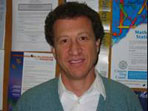

 |
Zafer Boybeyi | Department of Earth Systems and GeoInformation Sciences, GMU The past three decades can be distinguished by the increased awareness of atmospheric hazards among people all over the world. Here hazard refers to severe weather (such as hurricanes, tornadoes, thunderstorms, lightning, blizzards, snow storms, heavy precipitation events, floods, etc.) and hazardous atmospheric releases (such as intentional and/or unintentional chemical, biological, radiological and nuclear releases into the atmosphere, dust storms, volcanic eruptions, wildfires, biomass burning, etc.). In particular, in recent years, global warming and increased activities of hurricanes, floods, wild fires, dust storms, tornadoes, and severe weather events have received tremendous public attention. Furthermore, national security concerns have expanded beyond nuclear to include chemical, biological, and radiological releases into the atmosphere. Potential scenarios range from a wide spectrum of accident responses to countering urban terrorism threats. The potential for the release into the atmosphere of hazardous materials (such as chemical, biological, radiological, and nuclear) is therefore an increasing problem in this technological age. For example, hazardous releases can occur due to industrial accidents such as that seen in Bhopal, India in 1984, Chernobyl nuclear disaster in Ukraine in 1986, or as the unintentional result of military actions, such as the U.S. destruction of chemical weapons, in Kamisiyah, Iraq in 1991. In response to the increased interest in this field, the study of atmospheric hazard has been the subject of many studies in the past decades. Nevertheless, the study of hazard is still a high priority topic of research, due to their potential large economic impact as well as public safety issues. A study involving numerical modeling, simulations, and assessment research will be presented to characterize and better predict the behavior of atmospheric hazards (i.e., severe weather and hazardous atmospheric releases). Atmospheric hazard research needs and priorities will also be discussed in this presentation. |